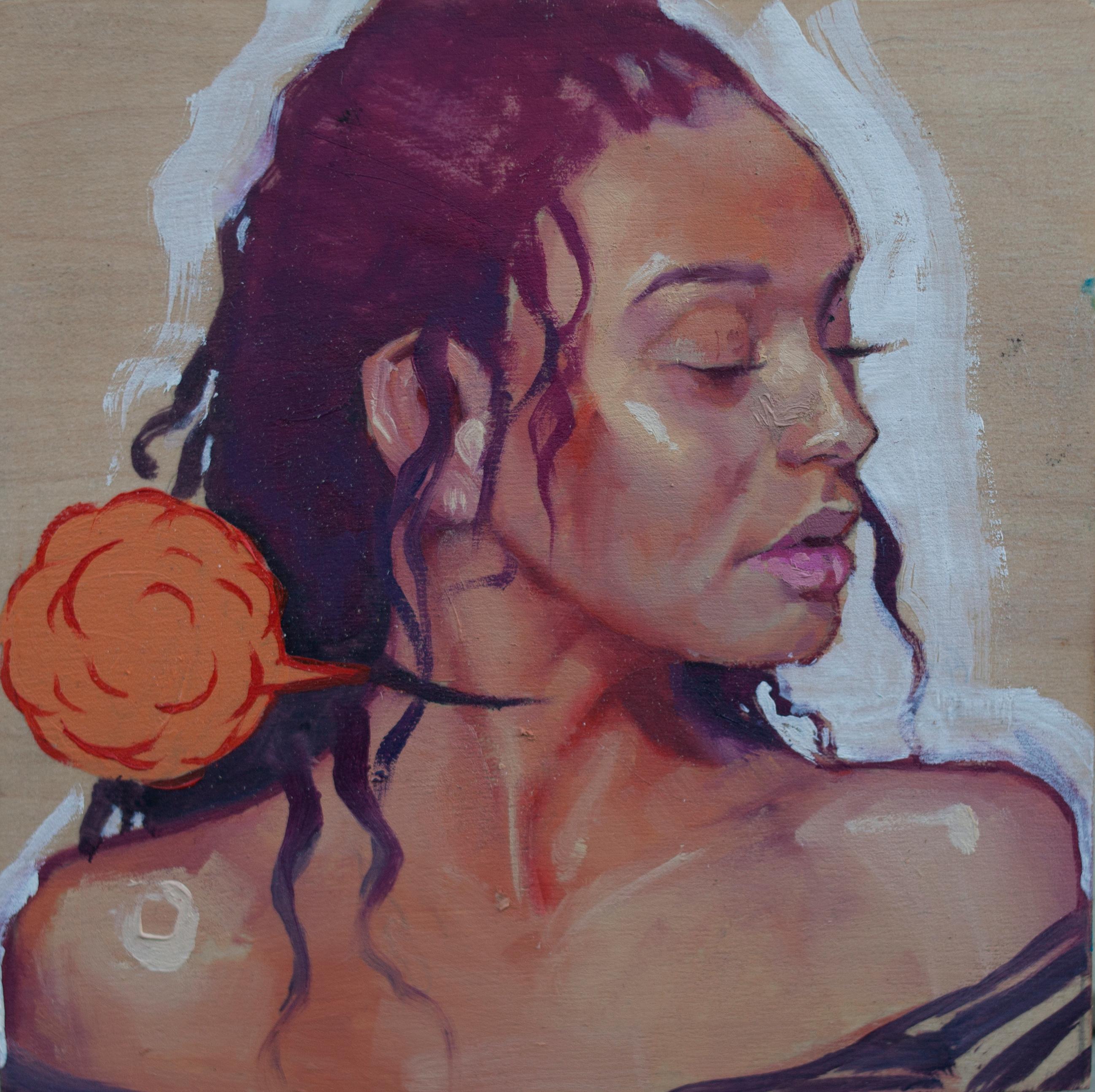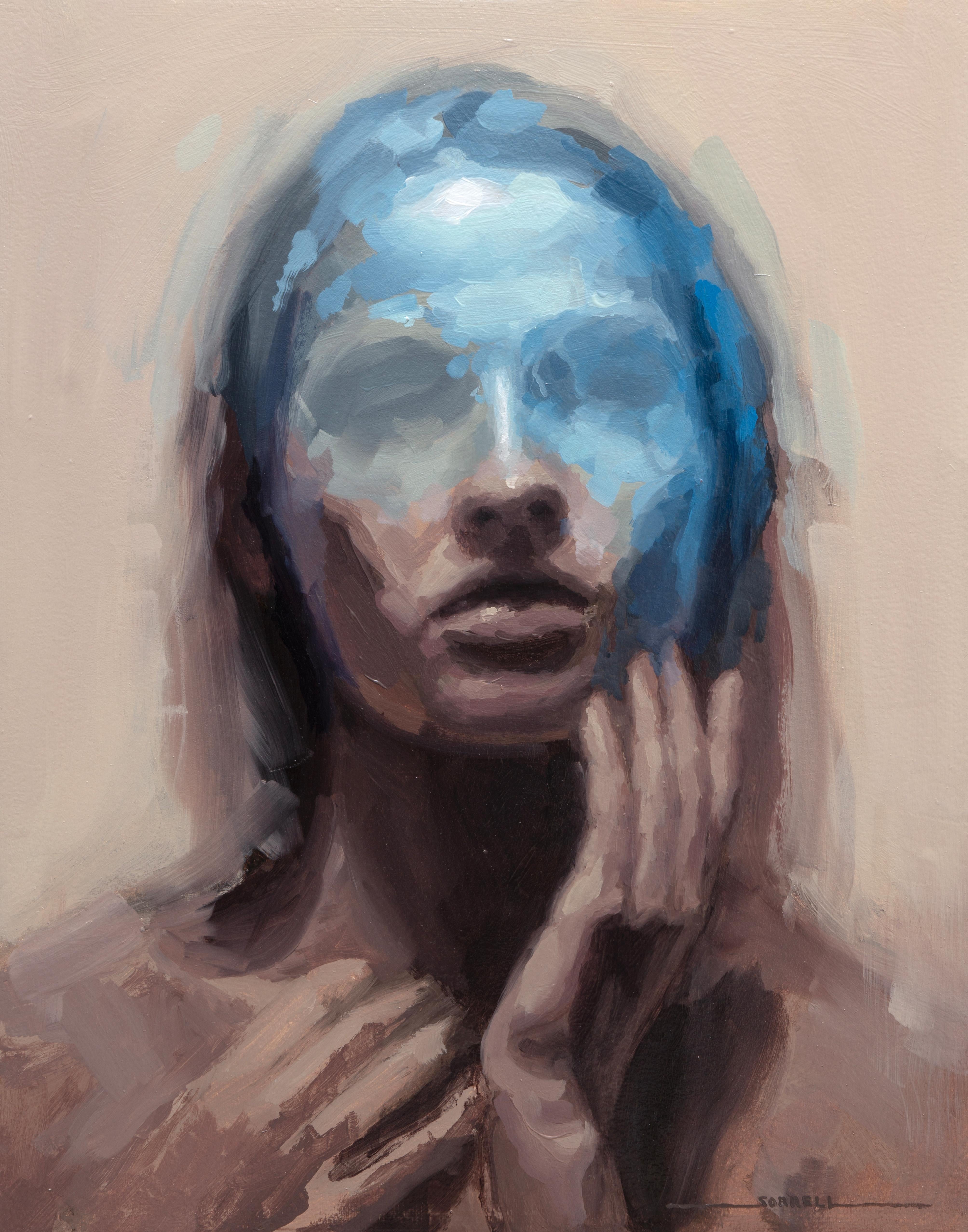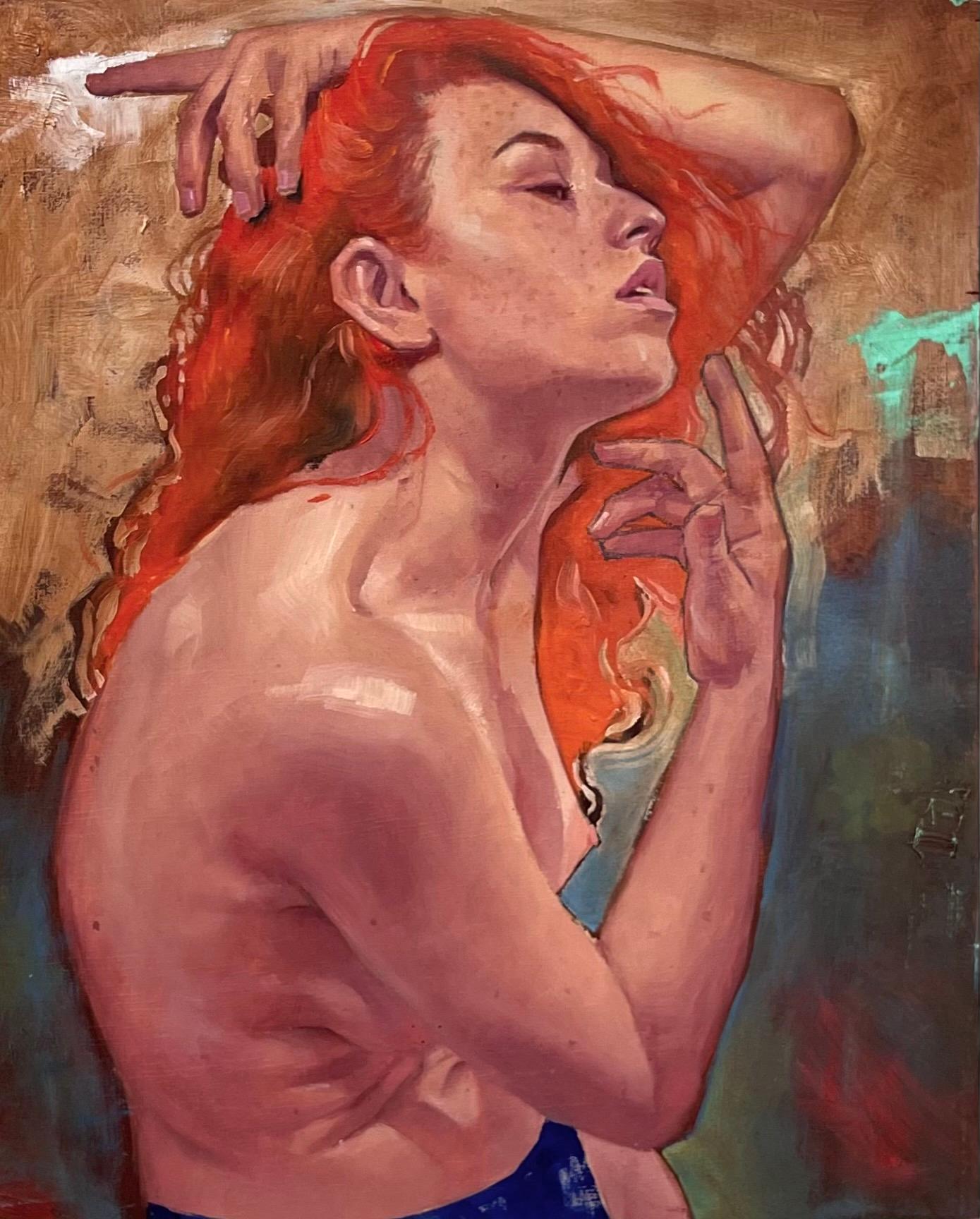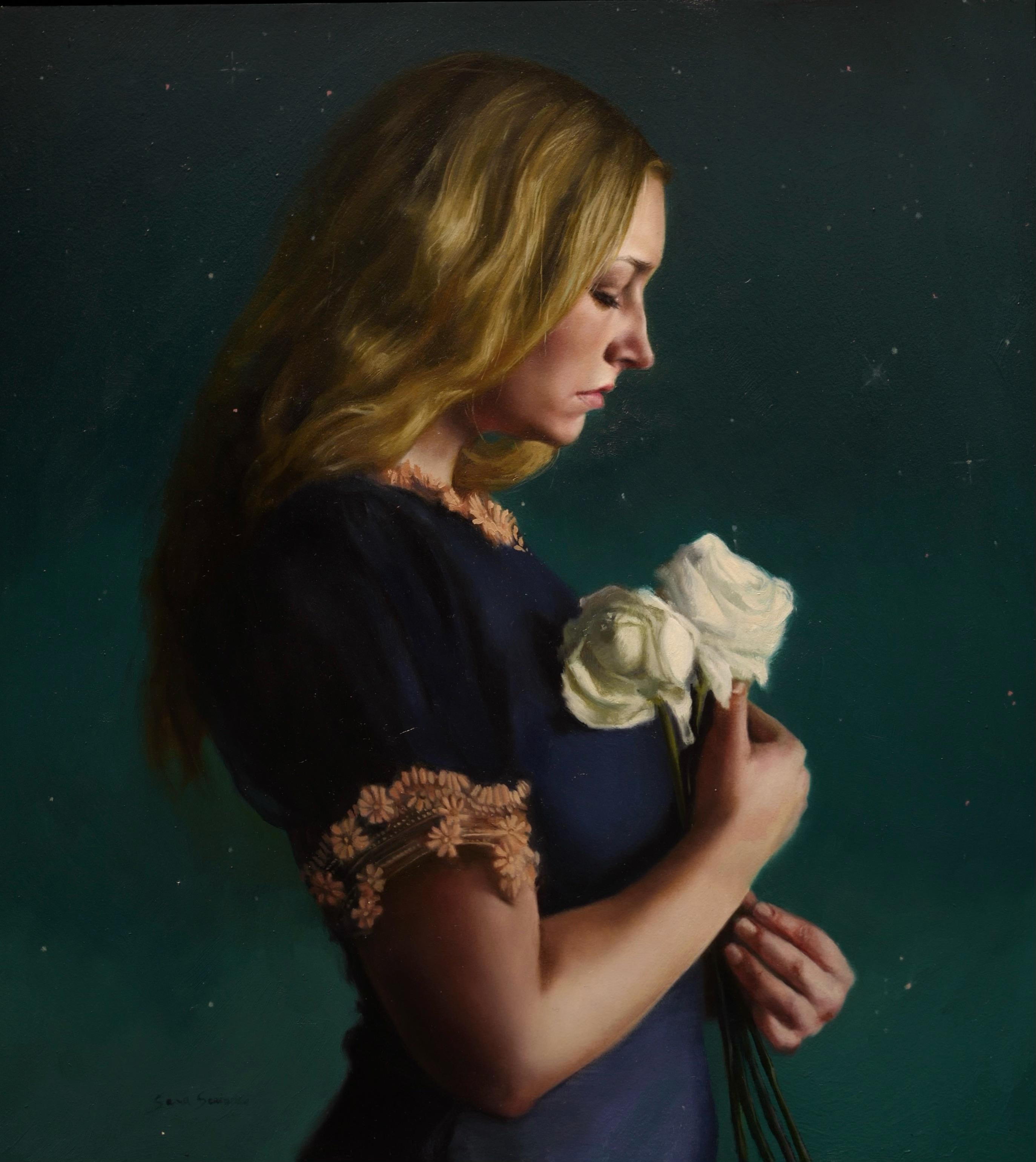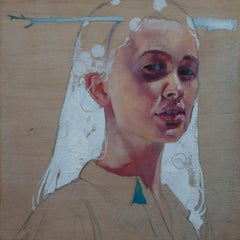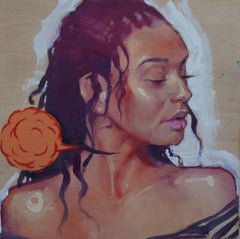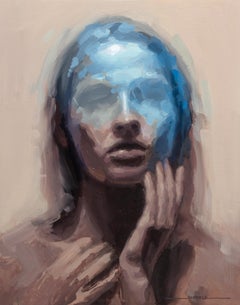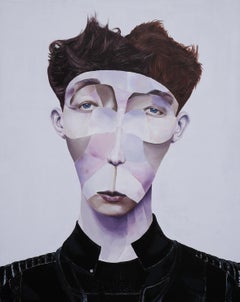Items Similar to "Beak" Oil Painting
Want more images or videos?
Request additional images or videos from the seller
1 of 2
Joshua Lawyer"Beak" Oil Painting2020
2020
$450
£341.79
€394.88
CA$630.69
A$705.86
CHF 368.41
MX$8,607.88
NOK 4,715.09
SEK 4,463.44
DKK 2,946.91
Shipping
Retrieving quote...The 1stDibs Promise:
Authenticity Guarantee,
Money-Back Guarantee,
24-Hour Cancellation
About the Item
Joshua Lawyer's (US based) "Beak" is an oil painting that depicts a figure with her face in profile with a yellow triangle that resembles a beak.
- Creator:Joshua Lawyer
- Creation Year:2020
- Dimensions:Height: 5 in (12.7 cm)Width: 5 in (12.7 cm)
- Medium:
- Movement & Style:
- Period:
- Condition:
- Gallery Location:Denver, CO
- Reference Number:1stDibs: LU130826952372
About the Seller
5.0
Platinum Seller
Premium sellers with a 4.7+ rating and 24-hour response times
Established in 1990
1stDibs seller since 2019
716 sales on 1stDibs
Typical response time: 1 hour
- ShippingRetrieving quote...Shipping from: Denver, CO
- Return Policy
Authenticity Guarantee
In the unlikely event there’s an issue with an item’s authenticity, contact us within 1 year for a full refund. DetailsMoney-Back Guarantee
If your item is not as described, is damaged in transit, or does not arrive, contact us within 7 days for a full refund. Details24-Hour Cancellation
You have a 24-hour grace period in which to reconsider your purchase, with no questions asked.Vetted Professional Sellers
Our world-class sellers must adhere to strict standards for service and quality, maintaining the integrity of our listings.Price-Match Guarantee
If you find that a seller listed the same item for a lower price elsewhere, we’ll match it.Trusted Global Delivery
Our best-in-class carrier network provides specialized shipping options worldwide, including custom delivery.More From This Seller
View All"Antler" Oil Painting
Located in Denver, CO
Joshua Lawyer's (US based) "Antler" is an oil painting that depicts a figure with a white branch appearing as an antler on her head.
Category
2010s Surrealist Portrait Paintings
Materials
Oil, Wood
"Gills" Oil Painting
Located in Denver, CO
Joshua Lawyer's (US based) "Gills" is an oil painting that depicts a figure with her face in profile with an air bubble escaping the gills on her neck
Category
2010s Surrealist Portrait Paintings
Materials
Wood, Oil
"Captured Moment 2" by Ale Casanova, Original Oil Painting, Portrait
Located in Denver, CO
Ale Casanova's "Captured Moment 2" is an original, handmade oil painting that depicts a portrait of a model with their hand under their chin.
Alejandro ...
Category
2010s Portrait Paintings
Materials
Oil, Panel
"Renewal" (2024) by Josh Sorrell, Original Oil Painting, Surreal Portrait
Located in Denver, CO
"Renewal" (2024) by Josh Sorrell depicts a abstract expressionist portrait of a woman in shining blue light. This painting measures 14 x 11 x 2 inches and is unframed but ready to ha...
Category
2010s Abstract Expressionist Portrait Paintings
Materials
Oil, Panel
"Siren" Oil Painting
Located in Denver, CO
Joshua Lawyer's (US based) "Siren" is an original, handmade oil painting that depicts a nude red-headed female figure, with freckles, closing her eyes as...
Category
2010s Realist Nude Paintings
Materials
Wood, Oil
"Katie, " Oil Painting
Located in Denver, CO
Sara Scribner's (US based) "Katie" is an original, handmade oil painting that depicts a realistic portrait of a blonde feminine figure in profile clutchi...
Category
2010s Surrealist Portrait Paintings
Materials
Oil, Panel
You May Also Like
"Edifice" Oil Painting
By Judith Peck
Located in Denver, CO
Judith Peck's (US based) "Edifice" is an oil painting that depicts a feminine figure resting her face on her closed fist while her eyes look away.
Category
2010s Realist Figurative Paintings
Materials
Oil, Panel
Moon, Painting, Oil on Canvas
By Jo Beer
Located in Yardley, PA
Moon is my daughter's middle name. I would have preferred it to have been her first name but worried that she might resent it over time. Beautiful milky skin, a tumble of pre-Raph...
Category
2010s Realist Figurative Paintings
Materials
Oil
Grim - 21st Century, oil painting, canvas, portrait, social commentary
Located in Barcelona, Catalonia
Renowned for his mastery in design and sculpture, Tena embarked on a profound personal journey in 2023, which rekindled his passion for painting after a 30-year hiatus. His return to...
Category
21st Century and Contemporary Contemporary Portrait Paintings
Materials
Canvas, Oil, Acrylic
Fauno - 21st Century, oil painting, canvas, portrait, social commentary
Located in Barcelona, Catalonia
Renowned for his mastery in design and sculpture, Tena embarked on a profound personal journey in 2023, which rekindled his passion for painting after a 30-year hiatus. His return to...
Category
21st Century and Contemporary Contemporary Portrait Paintings
Materials
Canvas, Oil, Acrylic
Proximity, Painting, Oil on Canvas
By Jo Beer
Located in Yardley, PA
I asked this young woman to lay on the carpet for this sitting. I wanted to focus closely on her quirky fresh face and wonderful russet hair. It has a lot of sumptuous colour- dee...
Category
2010s Realist Paintings
Materials
Oil
"Esca" Original Contemporary Oil Painting by David Abed
Located in Chicago, IL
Note: We highly recommend shipping through 1stDibs for its cost effectiveness, full insurance coverage, and reliable handling. While standard parcel services are an option, the defau...
Category
21st Century and Contemporary Contemporary Figurative Paintings
Materials
Copper

